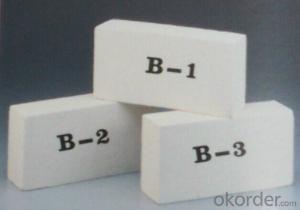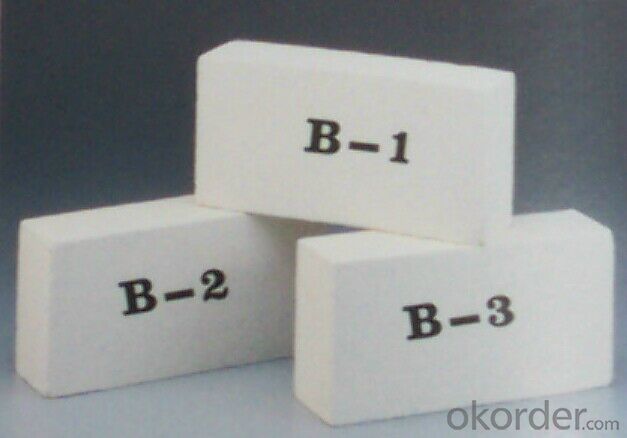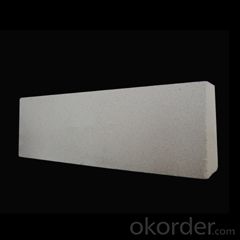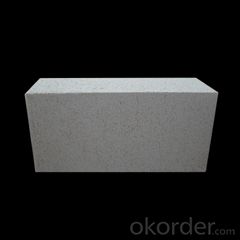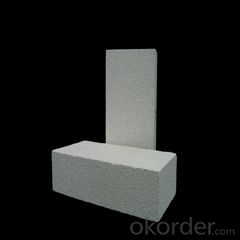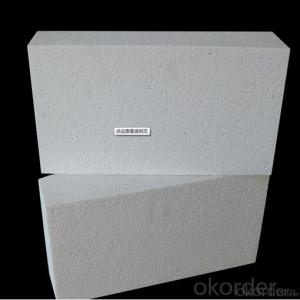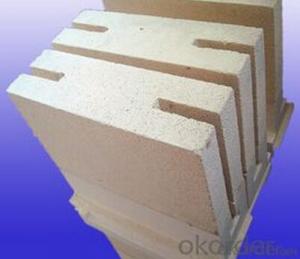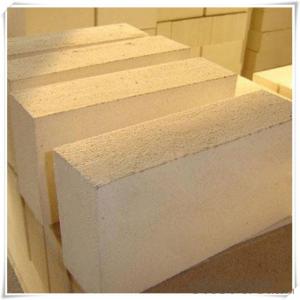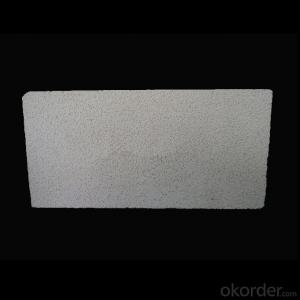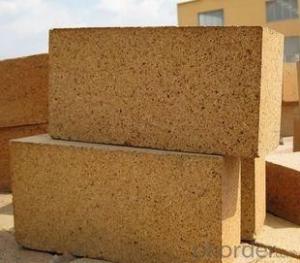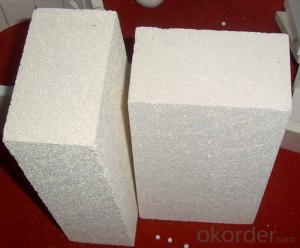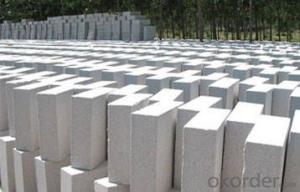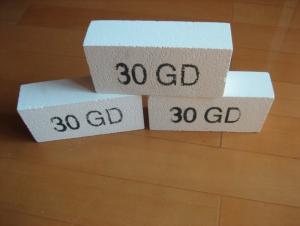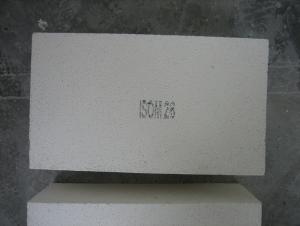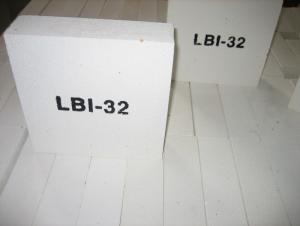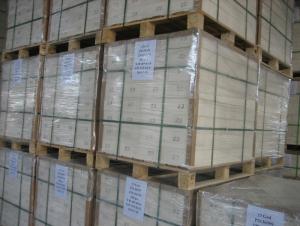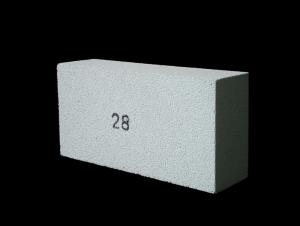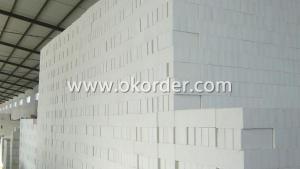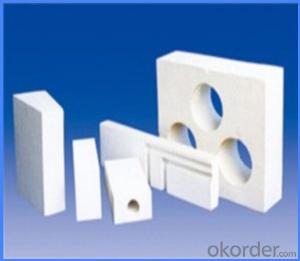Insulating Fire Brick Mullita Ladrilo Refractario Refractarios Aislantes JM 27
- Loading Port:
- Shanghai
- Payment Terms:
- TT OR LC
- Min Order Qty:
- 5000 kg
- Supply Capability:
- 5000000 kg/month
OKorder Service Pledge
OKorder Financial Service
You Might Also Like
Mullita ladrillo refractario refractarios aislantes JM 23
Aislamiento de calor de la serie okorder ladrillo
La serie okorder ladrillo es un eficaz aislamiento térmico, ahorro de energía, baja en carbono, la protección del medio ambiente avanzado, de acuerdo a la norma ASTM la fabricacion de productos.Okorder serie productos son mejores Li Ning y aislamiento en todo tipo de hornos industriales en el sector metalurgico, aluminio, petroquímica, energía eléctrica y materiales de cerámica de vidrio.Pueden ser utilizados como parte de la capa de aislamiento termico o non - Fusion.Los productos han sido ampliamente utilizados en el horno, logra resultados satisfactorios.
Aplicación de la preservación del calor de ladrillo
Industria metalurgica: Blast Furnace, hot alto horno, horno de calefaccion, etc.
Industria petroquímica: etileno horno horno de cracking, producción de hidrógeno, reformador primario, horno de calefaccion, etc.
Industria: horno de rodillos de cerámica, horno, etc.
Industria del vidrio: vidrio horno regenerador, etc.
Industria de carbono: carbono horno, etc.
Sector de la electrólisis de aluminio: aluminio reducción celular, etc.
Otras industrias: horno de tunel, Servicio de horno, etc.
Ventajas de ladrillo del aislamiento de calor
Baja conductividad térmica: mayor porosidad traerá buen aislamiento termico, ahorro de energía.
Alta resistencia al aplastamiento: alta resistencia al aplastamiento, la estabilidad de volumen.
Almacenamiento de calor: pequeños de almacenamiento de calor bajo para absorber más calor, ahorro de efecto es evidente.
Gao Chundu: hierro, metal alcalino de bajo contenido de impurezas.
El tamaño exacto: tamaño de ladrillo precision de procesamiento, forma especial de corte y molienda, acelerar el ladrillo.
Foto de ladrillo aislante
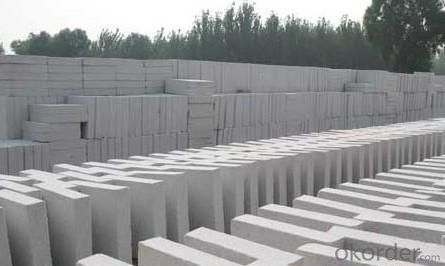
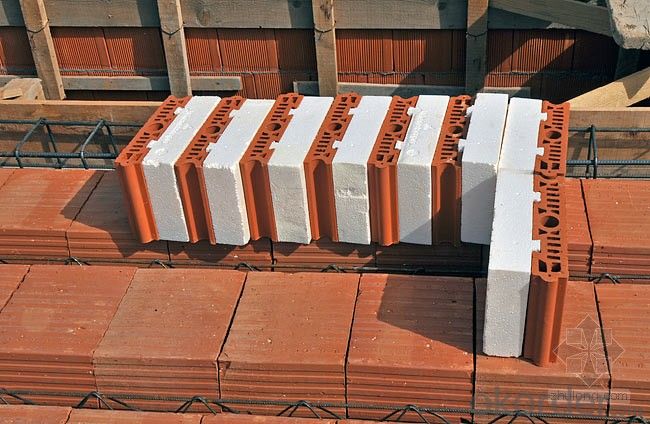

Problema común soluciones
1.¿Que productos tienes?
Disponemos de todo tipo de ladrillos refractarios, refractarios materiales de fundicion, mortero, cemento, productos de fibra cerámica, etc.
O usted puede hojear nuestros productos a elegir lo que usted necesita.
2.¿Cómo controlar la calidad del producto?
Con sistema de estricto control de calidad en la seleccion de materiales y el proceso de producción, tenemos la calidad de materiales refractarios y productos de fibra cerámica para satisfacer las necesidades de los clientes.
Desde la seleccion de materias primas, la calidad de nuestro control para empezar.El certificado de calidad de la materia prima es necesaria, cada lote de los productos serán probados en el uso de la línea.En el proceso de producción, el control de calidad por los trabajadores, y luego cada pieza de la clasificación, y mediante la supervisión de la calidad y la inspección.
3.¿Me puedes dar una breve introducción a la aplicación de su producto?
Mi empresa se dedica principalmente en refractarios en el acero, cemento, vidrio, cerámica, petroquímica, energía eléctrica y otras industrias.
4.¿Qué información necesitas si te necesito?
Con el fin de seleccionar los productos adecuados, que nos proporcionará la información, tales como los Estados Unidos, datos técnicos, cantidad de pedido, la aplicación del producto, etc.
Si usted tiene alguna pregunta, por favor pongase en contacto con nosotros.
- Q: Are insulating fire bricks easy to clean?
- When it comes to cleanliness, insulating fire bricks have an advantage over other brick types. Their porous composition means they don't collect as much dirt or debris. To clean these bricks, simply use a soft brush or vacuum cleaner to remove loose dust or soot. For tougher stains or residues, a mild detergent solution can be used. Gently scrub and rinse the bricks afterwards. Be careful not to use harsh chemicals or abrasive materials that could harm the surface. With appropriate care and maintenance, insulating fire bricks can be cleaned with ease.
- Q: Do insulating fire bricks require any special curing or firing temperature profiles?
- Special curing and firing temperature profiles are indeed necessary for insulating fire bricks. These bricks are made from lightweight materials like perlite, vermiculite, or alumina silicate, all of which possess exceptional insulating properties. Their design enables them to endure high temperatures while providing superior thermal insulation. Throughout the manufacturing process, insulating fire bricks undergo a curing procedure to eliminate any moisture content. This is typically achieved by gradually raising the temperature in a controlled manner. The curing process is essential to prevent any potential cracking or damage that may occur if the bricks were subjected to high temperatures too quickly. When it comes to firing temperature profiles, careful consideration is required for insulating fire bricks. They are specifically designed for applications where temperatures can reach up to 2800°F (1538°C). Therefore, it is crucial to adhere to the recommended firing temperature profiles provided by the manufacturer. The firing temperature profile usually involves a gradual increase in temperature to allow the insulating fire bricks to reach the desired maximum temperature without experiencing any thermal shock or damage. This gradual heating process ensures that the bricks are adequately cured and capable of withstanding the extreme temperatures they will encounter during use. It is worth noting that the specific curing and firing temperature profiles may vary depending on the type and composition of the insulating fire bricks. Consequently, it is vital to consult the manufacturer's guidelines and recommendations to ensure the proper curing and firing process for the specific type of insulating fire bricks being utilized.
- Q: Can insulating fire bricks be used in metal smelting furnaces?
- Insulating fire bricks are indeed suitable for metal smelting furnaces. Specifically designed with low thermal conductivity, these bricks effectively retain heat and prevent heat loss from the furnace. This quality makes them perfect for maintaining high temperatures over long periods in metal smelting furnaces. Moreover, insulating fire bricks exhibit resistance to thermal shock, enabling them to endure the extreme conditions and sudden temperature fluctuations that occur during metal smelting processes. Additionally, their lightweight nature facilitates easy handling and installation within the furnace. In summary, insulating fire bricks are an excellent choice for enhancing energy efficiency and extending the lifespan of metal smelting furnaces.
- Q: Do insulating fire bricks have a low coefficient of thermal expansion?
- Yes, insulating fire bricks have a low coefficient of thermal expansion. This means that they expand and contract very little when exposed to high temperatures. Insulating fire bricks are specifically designed to withstand extreme heat and maintain their structural integrity. Their low coefficient of thermal expansion helps them to resist cracking or breaking due to thermal stress. This property makes them ideal for applications such as insulation in furnaces, kilns, and other high-temperature environments where thermal stability is crucial.
- Q: Can insulating fire bricks be used in the construction of heat storage systems?
- Yes, insulating fire bricks can be used in the construction of heat storage systems. Insulating fire bricks are designed to have low thermal conductivity, which means they are capable of trapping and storing heat effectively. These bricks are made from materials such as fire clay, which have excellent insulation properties. By using insulating fire bricks, heat loss can be minimized, allowing for efficient heat storage and retention in heat storage systems. The bricks can be used to build the walls and lining of the heat storage system, ensuring that the stored heat is not dissipated to the surroundings. Additionally, insulating fire bricks are lightweight and easy to handle, making them a convenient choice for constructing heat storage systems. Overall, the use of insulating fire bricks in the construction of heat storage systems enhances their thermal efficiency and contributes to more effective heat management.
- Q: Are insulating fire bricks resistant to alkali-silica reaction?
- IFBs do not possess inherent resistance against alkali-silica reaction (ASR), which is a chemical reaction occurring between the alkalis from cement and reactive forms of silica found in aggregates. This reaction can result in the formation of a gel that expands and causes cracks in concrete structures. Although IFBs are typically constructed from refractory materials engineered to withstand high temperatures and thermal shock, they lack specific properties to combat ASR. The refractory material's composition and characteristics determine its resistance to ASR when used in IFBs. Should the refractory material utilized in an IFB contain reactive forms of silica like quartz or cristobalite, and there is exposure to alkalis, the possibility of ASR occurring exists. However, if the refractory material has a low content of reactive silica or contains additives that can mitigate ASR, the risk of ASR can be minimized. It is essential to recognize that the primary function of IFBs is to provide insulation in high-temperature applications, such as kilns, furnaces, and fireplaces. If ASR resistance is a crucial requirement for a specific application, it is advisable to consult the manufacturer or a materials engineer to determine the suitability of the IFB for that particular scenario.
- Q: How do insulating fire bricks affect the overall carbon footprint of a structure?
- Insulating fire bricks can significantly reduce the carbon footprint of a structure. These bricks have higher thermal insulation properties compared to traditional bricks, which means they can better retain heat and reduce the need for excessive heating or cooling. By improving energy efficiency and reducing the consumption of fossil fuels, insulating fire bricks help to lower the carbon emissions associated with the structure's operation. Additionally, their longer lifespan and recyclability contribute to further environmental benefits by reducing waste generation and the need for frequent replacements, ultimately minimizing the overall carbon footprint of the structure.
- Q: Can insulating fire bricks be used in refractory linings for boilers?
- Insulating fire bricks have the potential to be utilized in boiler refractory linings. They possess a specific design that enables them to exhibit low thermal conductivity, rendering them suitable for situations that necessitate heat insulation. Within boiler systems, insulating fire bricks may be employed to construct linings for the combustion chamber's walls, roof, and floor, as well as the flue gas passages. By implementing insulating fire bricks in these regions, the boiler's heat loss can be minimized, subsequently enhancing energy efficiency. Furthermore, insulating fire bricks are characterized by their lightweight nature and ease of installation, making them a convenient option for boiler refractory linings.
- Q: Are insulating fire bricks resistant to insects and rodents?
- No, insulating fire bricks are not specifically designed to be resistant to insects and rodents. While these bricks are primarily used for their excellent thermal insulation properties in high-temperature applications such as furnaces and kilns, they do not possess any inherent resistance to pests. If you are concerned about insects or rodents, it is recommended to implement additional pest control measures such as sealing any gaps or cracks and using appropriate pest deterrents.
- Q: Can insulating fire bricks be used for insulation in steel mills?
- Yes, insulating fire bricks can be used for insulation in steel mills. Insulating fire bricks are specifically designed to withstand high temperatures and are used in various industrial applications, including steel mills, to provide thermal insulation and reduce heat loss. They help maintain consistent temperatures, improve energy efficiency, and protect equipment and structures from extreme heat.
Send your message to us
Insulating Fire Brick Mullita Ladrilo Refractario Refractarios Aislantes JM 27
- Loading Port:
- Shanghai
- Payment Terms:
- TT OR LC
- Min Order Qty:
- 5000 kg
- Supply Capability:
- 5000000 kg/month
OKorder Service Pledge
OKorder Financial Service
Similar products
Hot products
Hot Searches
Related keywords
